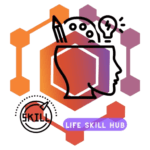Table of Contents
ToggleWhat is Social Media Optimization?
Definition:
- Social Media Optimization (SMO) is the process of optimizing social media platforms to increase brand visibility, engage with the audience, and drive traffic to a website or business.
What is Social Media Marketing (SMM)?
Definition:
- Social Media Marketing (SMM) involves creating and sharing content on social media platforms to achieve marketing and branding goals.
Search Engine Optimization vs Social Media Optimization:
1. Objective:
- SEO: Enhances website visibility on search engines.
- SMO: Improves engagement and visibility on social media platforms.
2. Techniques:
- SEO: Focuses on on-page and off-page optimization.
- SMO: Emphasizes creating shareable and engaging content.
3. Platforms:
- SEO: Primarily search engines like Google.
- SMO: Social media platforms like Facebook, Twitter, Instagram.
List of Social Media:
- Facebook, Twitter, LinkedIn, Instagram, Pinterest, Snapchat, YouTube, TikTok, WhatsApp, Reddit, and many more.
Importance of Social Media:
1. Brand Visibility:
- Increases brand awareness and recognition.
2. Audience Engagement:
- Provides a platform for direct interaction with the audience.
3. Traffic Generation:
- Drives traffic to websites and increases conversions.
4. Customer Feedback:
- Facilitates immediate feedback and customer reviews.
How Social Media Affects SEO?
- Social Signals:
- Social media activity can influence search engine rankings.
- Content Distribution:
- Sharing content on social media can lead to increased visibility and backlinks.
How to Promote Business Through SMO:
1. Complete Profiles:
- Ensure profiles on social platforms are fully filled out.
2. Consistent Branding:
- Maintain consistent branding across all social media channels.
3. Quality Content:
- Share relevant, valuable, and engaging content.
4. Use Visuals:
- Incorporate visuals like images and videos for better engagement.
5. Interact with Audience:
- Respond to comments, messages, and engage with the audience.
What is Viral Marketing:
Definition:
- Viral marketing is a strategy that encourages individuals to share a message exponentially, leading to rapid and widespread distribution.
Social Media Success Tracking Tools:
- Google Analytics, Facebook Insights, Twitter Analytics, Instagram Insights, and social media management tools like Hootsuite and Buffer.
What Type of Social Media Content Converts Best?
1. Visual Content:
- Images and videos often have higher engagement.
2. User-Generated Content:
- Encourage customers to create content related to your brand.
3. Contests and Giveaways:
- Engages the audience and promotes sharing.
What is the Responsibility of a Social Media Manager?
- Content Creation:
- Develop and curate engaging content.
- Audience Engagement:
- Respond to comments, messages, and foster community interaction.
- Analytics and Reporting:
- Monitor and analyze social media performance.
Top Social Media Marketing Tools to Consider:
- Hootsuite, Buffer, Sprout Social, SocialBee, Canva (for graphics), and more.
Some Common Social Media Mistakes:
1. Inconsistent Posting:
- Maintain a consistent posting schedule.
2. Ignoring Audience:
- Engage with the audience through comments and messages.
3. Lack of Visuals:
- Incorporate visuals for higher engagement.
4. Not Tracking Metrics:
- Regularly monitor analytics to assess performance.
Social Media Optimization is crucial for building a strong online presence and engaging with the target audience. If you have specific questions or need further guidance on any aspect of SMO, feel free to ask!
